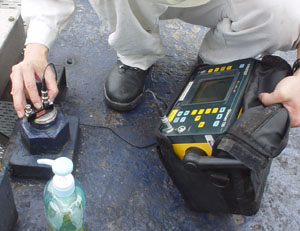| |
|
|
|
| Application |
- |
Most weld discontinuities including cracks, slag, lack of fusion, lack of bond, accurate thickness
measurements possible. |
Back |
| |
- |
Poisson's ratio may be obtained by determining the modulus of elasticity. |
|
| |
|
|
|
| Advantage |
- |
Most sensitive to planar type defects. |
Back |
| |
- |
Test results known immediately. |
|
| |
- |
Portable. |
|
| |
- |
Ultrasonic flaw detectors do not require an electrical power outlet. |
|
| |
- |
High outlet. |
|
| |
- |
High penetration capability. |
|
| |
- |
Requires access from only one surface. |
|
| |
|
|
|
| Limitations |
- |
Surface condition should be suitable for coupling of transducer. |
Back |
| |
- |
Couplant (liquid) required. |
|
| |
- |
Small, thin welds may be difficult to inspect. |
|
| |
- |
Reference standards are required. |
|
| |
- |
Requires a relatively skilled operator/inspector, and skilled interpretive personnel. |
|
| |
- |
Resolution of small defects near surface difficult. |
|
| |
